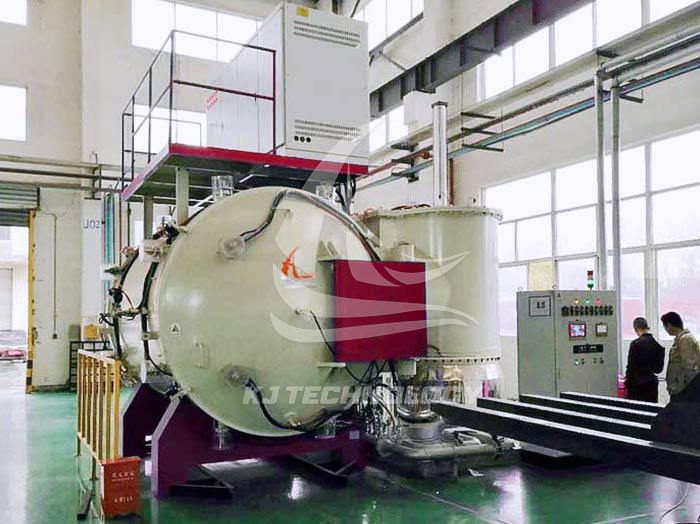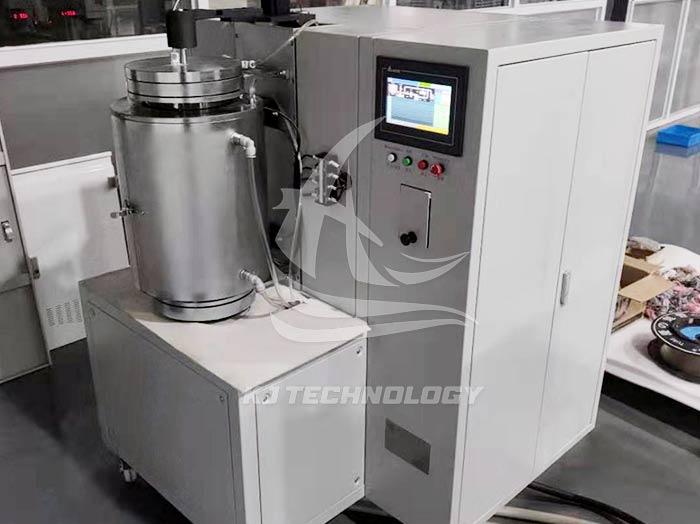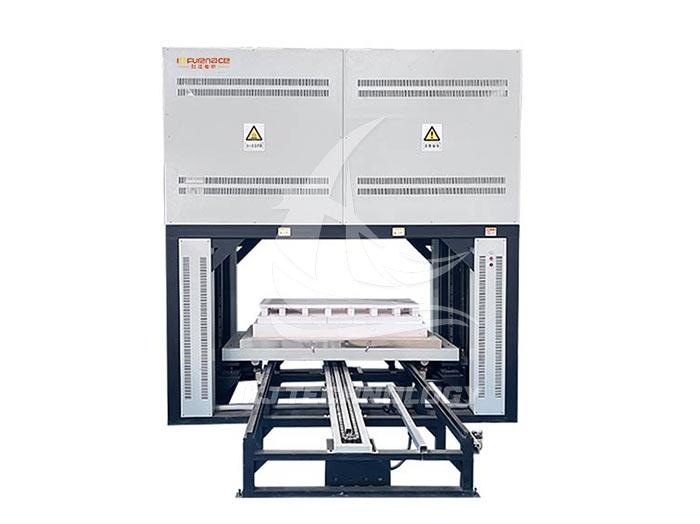Daily Maintenance Manual for Metal Material Vacuum Sintering Furnace
 06-20-2025 Author: KJ technology
06-20-2025 Author: KJ technology
Through standardized maintenance, the lifespan of the vacuum system in the vacuum sintering furnace can be extended to 5-8 years, and the replacement cycle of heating elements can be extended from 6 months to 1-2 years, significantly reducing equipment failure rates and energy consumption costs.
1. Maintenance principles and safety instructions
Core objective: To maintain vacuum stability, temperature control accuracy, and equipment operation safety, and extend the lifespan of key components such as heating elements and vacuum systems.
Safety prerequisite:
Before maintenance, ensure that the equipment is powered off, the furnace temperature drops to room temperature, and wear heat-resistant gloves and dust masks.
It is prohibited to disassemble components in a vacuum state. Inert gas (such as nitrogen) should be filled to atmospheric pressure first.
2. Daily maintenance items (pre - and post operation checks)
a. Appearance and sealing inspection
Furnace shell: Wipe the surface dust and oil stains, check whether there are scratches or deformations at the furnace door and flange connections (to avoid vacuum leakage).
Sealing ring: visually inspect the silicone ring/fluororubber ring at the furnace door and vacuum interface. If hardening, cracking, or aging occurs, replace it immediately (for example, it is recommended to replace the 100mm diameter furnace door sealing ring every 3 months).
Vacuum gauge: Clean the surface dust of the gauge probe to ensure stable vacuum reading on the display panel (normally ≤ 10 ⁻ Pa, if it continues to be higher than 10 ⁻ ² Pa, check for leaks).
b. Temperature control system inspection
Observe the deviation between the displayed value of the temperature control instrument and the set value (allowable error ± 5 ℃). If the fluctuation exceeds 10 ℃, calibrate the thermocouple (compare with a standard thermometer).
Check if there are signs of localized redness or breakage in heating elements such as molybdenum wire and graphite rod. If breakage is found, mark the location and arrange for replacement.
3. Weekly maintenance items (deep cleaning and functional testing)
a. Maintenance of vacuum system
Vacuum pump (taking rotary vane pump as an example):
After stopping the machine, observe the color of the pump oil. If it becomes cloudy or black, immediately replace the pump oil (recommended to use vacuum specific oil, such as HVI-100).
Clean the pump inlet filter to remove dust and metal debris (soak in alcohol for 10 minutes and air dry).
Diffusion pump (if equipped):
Check if the oil level is within the range of the scale line. If it is below the lower limit, add diffusion pump oil (be careful not to mix it with rotary vane pump oil).
b. Cleaning of furnace chamber and crucible
Use a dust-free cloth dipped in ethanol to wipe the inner wall of the furnace chamber and the surface of the crucible, removing residual metal oxides or volatile substances during the sintering process (to avoid accumulation that affects heating uniformity).
If sintering magnetic materials, it is necessary to use magnets to adsorb metal powder in the gaps of the furnace bottom plate to prevent short circuits.
4. Monthly maintenance items (systematic component inspection)
a. Electrical system testing
Measure the resistance value of the heating element with a multimeter and compare it with the standard value in the equipment manual (if the deviation exceeds 10%, it needs to be replaced).
Check whether the wiring terminals are loose or oxidized, polish the oxide layer with sandpaper, and then tighten them again (pay attention to the interfaces of the transformer and temperature controller).
b. Maintenance of atmosphere control system
Replace the gas filter element (such as nitrogen and argon pipelines). If the pressure gauge fluctuates abnormally during ventilation, check the sealing of the pressure reducing valve.
Testing the accuracy of gas flow controller (MFC): Set a flow rate of 100sccm, calibrate with soap film flowmeter, and recalibrate if the error exceeds 5%.
5. Quarterly/Annual Maintenance (Professional Level Maintenance)
a. Deep maintenance of vacuum system (quarterly)
Disassemble and inspect the vacuum valve: clean the dust and oil stains inside the solenoid valve, and check whether the sealing surface of the valve core is worn (can be polished with fine sandpaper for slight scratches).
Calibrate vacuum gauge: Send it to a third-party measuring institution for calibration to ensure that the vacuum measurement error is ≤ 5%.
b. Overhaul of Heating and Temperature Control System (Annual)
Completely replace the insulation material in the furnace cavity (such as alumina fiber felt). If the insulation layer becomes thinner or clumped, it needs to be replaced as a whole (insufficient thickness can increase energy consumption by more than 20%).
Re pour the refractory concrete for the furnace bottom plate (if cracking or peeling occurs), cure for 72 hours, and then put it back into use.
6. Safety Warning and Long term Suspension Precautions
Long term shutdown (exceeding 1 month):
Place silicone desiccant inside the furnace chamber and close all valves to prevent moisture from entering.
Start the vacuum pump and run it for 30 minutes every week to maintain the sealing of the vacuum system.
Prohibited items:
It is strictly prohibited to inject cold water into the furnace chamber before it has cooled down to avoid the explosion of refractory materials;
After sintering volatile substances (such as zinc and cadmium), the furnace chamber should be cleaned immediately to prevent corrosion of the heating elements.
Through standardized maintenance, the lifespan of the vacuum system in the vacuum sintering furnace can be extended to 5-8 years, and the replacement cycle of heating elements can be extended from 6 months to 1-2 years, significantly reducing equipment failure rates and energy consumption costs. Suggest developing personalized maintenance plans based on production frequency and providing regular training for operators.








